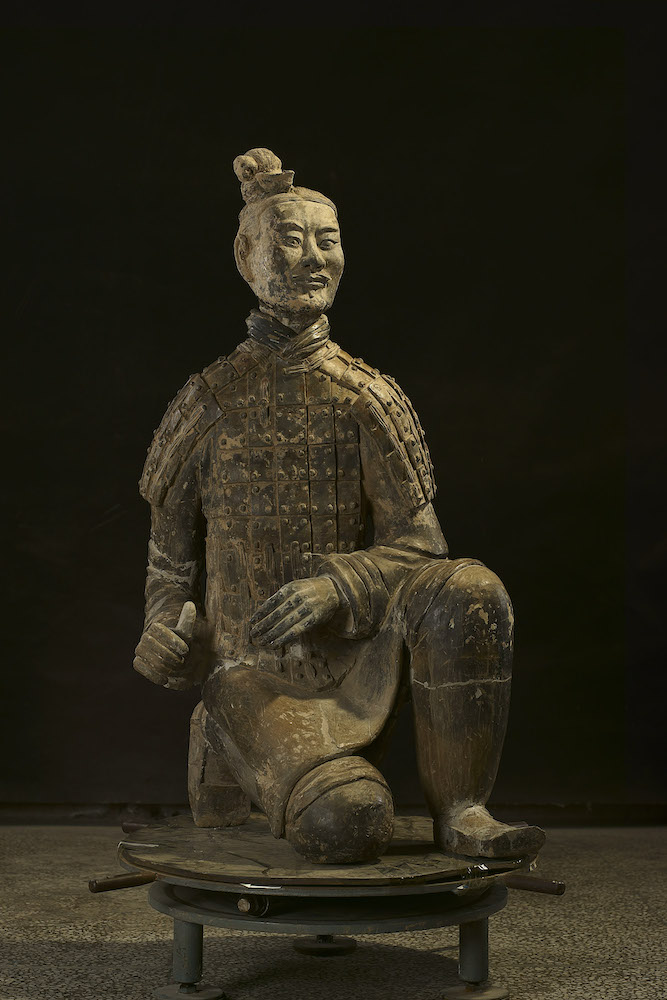In March 1974, a group of villagers digging a well in Shaanxi, China, unearthed fragments of a clay figure underneath a persimmon tree. To their amazement, they’d stumbled across one of the marvels of the world, bringing to light an entire army of life-size terracotta soldiers and horses that had lain underground for more than 2000 years. Archaeologists descended in droves and have never left.
 Kneeling Archer. Qin dynasty, 221–207 BCE. Earthenware, 120cm. Emperor Qin Shihuang’s Mausoleum Site Museum, Xi’an
Kneeling Archer. Qin dynasty, 221–207 BCE. Earthenware, 120cm. Emperor Qin Shihuang’s Mausoleum Site Museum, Xi’an
As they’ve come to be known, the Terracotta Warriors were buried in the late third-century BC in the tomb of the first emperor of China, Qin Shi Huang. Obsessed by the idea of immortality, he sought to reproduce imperial life as he knew it, ordering 700,000 people to construct a city with his mausoleum at the centre of a network of palaces, living quarters, offices and stables. The gargantuan public works project spanned more than 40 years and was still under way when the emperor died at 50. Unfinished though it might be, it spawned an estimated 8,000 clay soldiers, each coming in at 300 kilograms, as well as 130 chariots with...











Comments
Log in to join the conversation.